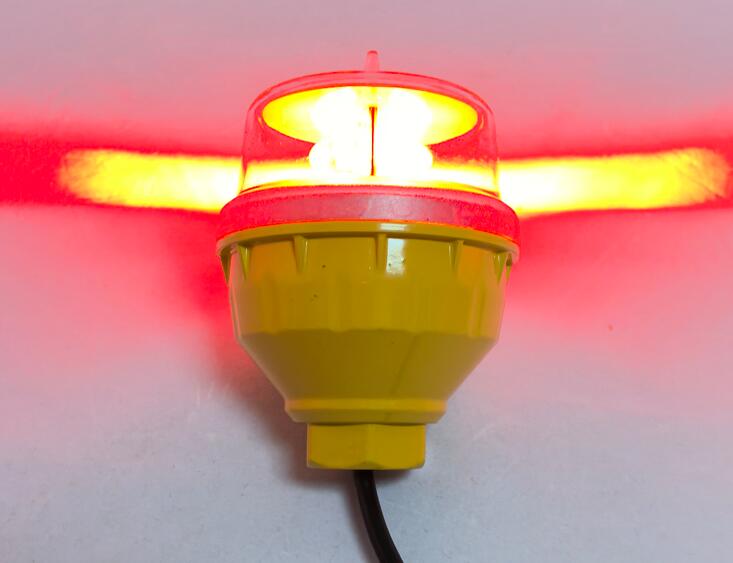L 810 Obstruction Light: Essential Safety Solutions for High-Rise Structures
The L 810 obstruction light is a critical safety device designed to enhance visibility and prevent collisions with tall structures. As urbanization and infrastructure development continue to rise, the need for reliable aviation warning systems becomes increasingly important. This article explores the significance, applications, and technological advancements of the L 810 obstruction light, emphasizing its role in safeguarding both air traffic and ground-based structures.
Why Obstruction Lighting Matters
Obstruction lights serve as a visual warning system for pilots, ensuring that tall structures such as telecommunication towers, wind turbines, and skyscrapers are easily identifiable, especially during low-visibility conditions. The L 810 obstruction light is specifically engineered to meet stringent aviation safety standards, providing high-intensity illumination that can be seen from considerable distances.

Without effective obstruction lighting, aircraft face significant risks, including mid-air collisions or accidents during takeoff and landing. Regulatory bodies such as the Federal Aviation Administration (FAA) and the International Civil Aviation Organization (ICAO) mandate the use of obstruction lights on structures exceeding certain heights. The L 810 model complies with these regulations, making it a preferred choice for many industries.
Key Features of the L 810 Obstruction Light
The L 810 obstruction light stands out due to its advanced engineering and durability. Some of its notable features include:
1. High-Intensity LED Technology
Modern L 810 obstruction lights utilize energy-efficient LEDs, offering superior brightness while consuming less power compared to traditional incandescent bulbs. LEDs also have a longer lifespan, reducing maintenance costs and downtime.
| L 810 obstruction lights |
2. Weather and Impact Resistance
Designed to withstand harsh environmental conditions, the L 810 is built with robust materials that resist corrosion, UV radiation, and extreme temperatures. Its rugged construction ensures reliable performance in storms, heavy winds, and other challenging weather scenarios.
3. Compliance with Aviation Standards
The L 810 meets FAA and ICAO requirements for medium-intensity obstruction lighting. It is available in both red and white variants, depending on the application and daytime/nighttime visibility needs.
4. Modular and Easy to Install
The compact and lightweight design of the L 810 allows for easy installation on various structures. Its modular construction simplifies maintenance, as individual components can be replaced without dismantling the entire unit.
Applications of the L 810 Obstruction Light
The versatility of the L 810 obstruction light makes it suitable for a wide range of industries:
1. Telecommunications Towers
Telecom towers are among the tallest man-made structures, posing a significant hazard to low-flying aircraft. The L 810 ensures these towers remain visible at all times, minimizing collision risks.
| L 810 obstruction light |
2. Wind Energy Farms
Wind turbines, often located in open and remote areas, require reliable obstruction lighting to alert pilots. The L 810’s durability and low power consumption make it ideal for wind farms.
3. High-Rise Buildings and Skyscrapers
In densely populated urban areas, tall buildings must be equipped with obstruction lights to comply with aviation safety regulations. The L 810 provides consistent illumination, enhancing safety for both aircraft and city dwellers.
4. Bridges and Power Lines
Large bridges and high-voltage power lines also benefit from obstruction lighting. The L 810’s high visibility ensures that these structures do not become navigational hazards for helicopters and small aircraft.
Future Trends in Obstruction Lighting
As technology advances, the L 810 obstruction light is expected to incorporate smarter features, such as:
Solar-Powered Operation: Reducing dependency on grid electricity and enhancing sustainability.
Remote Monitoring and Control: IoT-enabled systems that allow real-time diagnostics and automated alerts for maintenance.
Adaptive Lighting Systems: Adjusting brightness based on ambient light and weather conditions to optimize visibility and energy efficiency.
The L 810 obstruction light plays a vital role in modern aviation safety, ensuring that tall structures remain visible to pilots and reducing the risk of accidents. Its advanced LED technology, durability, and compliance with international standards make it an indispensable solution for various industries. As infrastructure continues to expand globally, the demand for reliable obstruction lighting like the L 810 will only grow, reinforcing its importance in safeguarding airspace and structural integrity.
